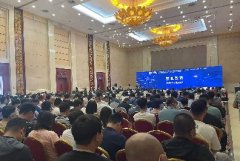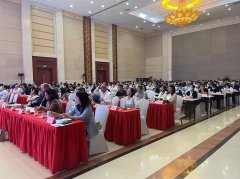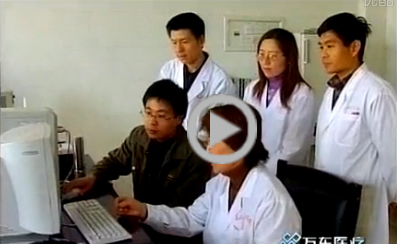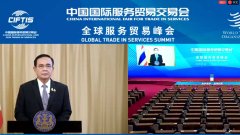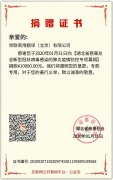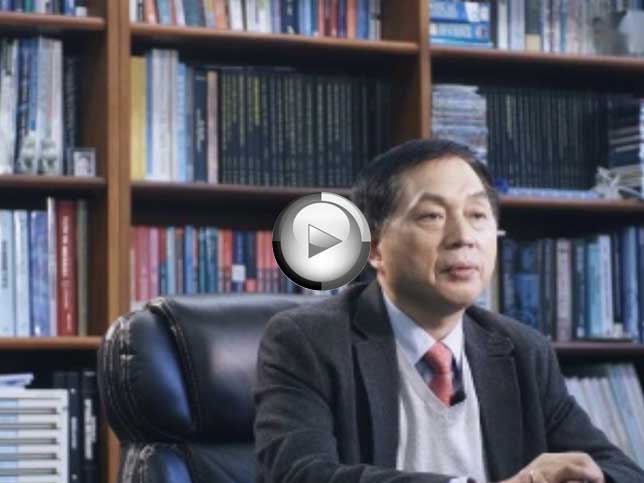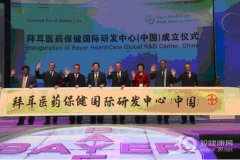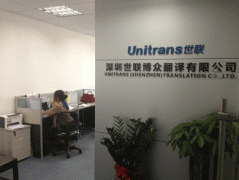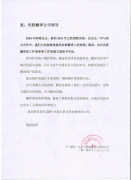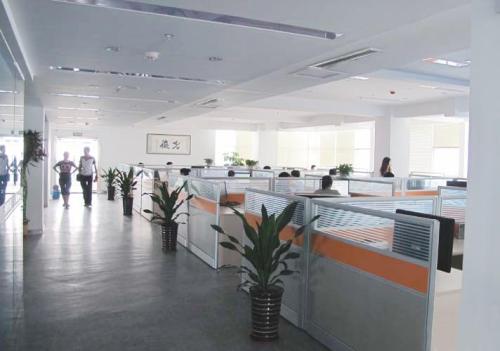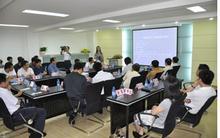上海翻译公司完成林业区域英文翻译
时间:2020-09-10 08:39 来源:未知 作者:dl 点击:次
上海翻译公司完成林业区域英文翻译
Abstract
Woodlands, wet lands and desertification land account for 63% of China’s territory, therefore, land use change is an important part of national greenhouse gas inventory, and accurate estimation of national and regional greenhouse gas sources and sinks not only fulfill the obligation specified in The United Nations Framework Convention on Climate Change (UNFCCC), but also meet the urgent requirements of promoting the strategy of sustainable development and ecological civilization construction. To continuously bring forest carbon sink function into play, and give full play to the unique role of forests in tackling climate changes, a scientific forestry carbon sink / source evaluation system is in need. Only by mastering the process and mechanism of forest carbon sequestration and carbon sink, and accurately measuring carbon sink / source of forest ecological system, can we further explore and accurately grasp the operating rules of forest carbon sink / source, reflect the contribution and important role of forests in mitigating climate change, and provide scientific support for our county to fight for the power of discourse and initiative in the international climate change process.
The project established forestry carbon accounting systems of provincial and regional levels, based on classification system of IPCC land use and land use change, adopting three-level methodology from simple to complex, and from low to high level. Different methodologies require different data and resources to provide a flexible selection of methodologies for different provinces based on the availability of their data and resources. The three-level methodology includes:
• • The first-level methodology: equals to the second level of IPCC methodology. This methodology estimates carbon stocks and carbon stock changes caused by different land use and land use change related to forestry, according to the method recommended by IPCC, by using statistical data of continuous forest inventory, which is conducted once every five years, and default parameters of national level. The measurement accuracy of this method is relatively low, but it is cheap, simple, requires a little data input, and uses default parameters of national level, so it is suitable for rough measurement of regional forestry carbon sink / source.
• • The second-level methodology: equals to the 2/3 level of IPCC methodology. This methodology estimates carbon stocks and carbon stock changes caused by different land use and land use change related to forestry, based on measured data of sample plots and trees in continuous forest inventory, which is conducted once every five years, local parameters, biomass and soil organic carbon spatial expansion model etc. This method can significantly improve the measurement accuracy, but requires measured data of sample plots and trees in forest inventory. And it further studies biomass of individual tree and soil organic carbon, especially the solution to solve the problem of spatial variability. Therefore, it requires higher cost.
• • The third level methodology: equals to the third level of IPCC methodology, representing the methodology of the highest international level. Based on the methodology of the second level, this methodology continuously simulates carbon stolk and the spatial and temporal distribution of its changes, with ecological process model, by integrating multi-source remote sensing data, climate data, physiological and ecological parameters, and by combining continuous distribution data of forest resources in forest resources survey and planning of county-level. The methodology of this level is the most accurate, but also the most complex and expensive.
Default parameters of national level obtained in this research, such as the accumulation - biomass transfer function, biomass - litter transfer function etc., shall be applied directly to the methodology of Chinese voluntary emissions reduction of trading forestry carbon sink project (afforestation carbon sink projects methodology, forest operating carbon sink project methodology)
During the research, we received the support from Survey & Planning Institute of State Forestry Administration, Sichuan Agricultural University, and 21 cities (prefectures) of Sichuan Province for the field survey of forest soil organic carbon and biomass, therefore, we would like to thank all the units and individuals who have helped us. Thank you for your help!
1. Objectives and Technical Route
1.1 Objectives
With Sichuan province as the demonstration province, based on the methodology of a higher level in the latest IPCC Guidelines, we aim to establish an internationally recognized measurement method system, which meets the requirements of UNFCCC reporting and future possible international obligation reporting, for regional land-use change and forestry carbon (including forest and the transferring between forests and other lands), to satisfy the information needs of Sichuan forestry to tackle climate change and forestry carbon source/sink management policies, and to improve the ability of China to establish the land-use change and measure forestry carbon source/sinks.
1.2 Technical Route
Integrate multi-source, multi-period forest resources survey data, remote sensing data and climate data, based on the forest resources survey and monitoring system. Build regional forestry carbon sink / source measurement platforms with gradually refined scale and increased accuracy for different scales and objects, through basic data of forest carbon source/sink measurement, measurement model parameters, measurement methods and models research. Conduct quantitative accounting on spatial and temporal dynamics of Sichuan forestry carbon stock and carbon sink / source with the application of measurement system, and compare and verify related measurement methods.
First, study the basic data of measurement. ① Informatization and standardization study on existing data of forests, meteorology and remote sensing in last 40 years; ② Thematic study on key elements such as biomass, forest soil organic carbon and eco-physiological parameters; ③ System restore and inversion of land-use change and forest disturbance in the last 40 years.
Second, study measurement method. ① With provincial statistical results as scale, optimize the second-level methodology recommended by IPCC as the first-level methodology of this measurement system; ② Detail the scale to sample plots and trees, conduct systematic study on measurement model of biomass and forest soil organic carbon, and develop methodology based on the scale of sample plots and trees, i.e. the second-level methodology of this measurement system; ③ Based on the second-level methodology, integrate multi-source, multi-period data such as remote sensing, climate data, eco-physiological parameters, and further extend measurement unit to mountain plot, to research the third-level methodology based on ecosystem process model.
Finally, study measurement system. ① Conduct systematic integration research on data layer, business layer and the presentation layer of forest carbon sink measurement system, and research and develop forest carbon sink measurement platform; ②With Sichuan Province as test area, inspect the practicality, reliability and integrity of the system to further improve and optimize platform, through 33 years’ spatial and temporal quantitative measurement of forest carbon sinks.
2. Forest Resource and Land Use Change in Forestry Sector
Forest resource data and land use change data are the basis of forest carbon measurement, and these data mainly come from the forest inventory in provincial unit every five years, forest resources planning and design survey every 10 years, in the unit of state-owned Forestry (field), nature reserves, forest parks and other forest management units or unit of county-level administrative region, and satellite remote sensing data, supplemented by annual forestry activities statistics and other statistical data. Although China has a long time sequence of related investigations and statistics, factors and technical standards of continuous forest inventory in various periods are under improvement, resulting in incomformity of survey data in various period to its content. Therefore, the contents, technical standards, the logical fitness, complete information of survey factors should be analyzed, normalized and standardized, including unification of index, standardization of content, unification of range, digitalization of information, and vectorization of graph.
2.1 Forest inventory
Sichuan continuous forest inventory system was put into use from 1979, establishing 23,588 ground survey plots within Sichuan (including Chongqing). During the first review in 1988, the province was divided into three deputy general areas -- the Jinsha & Yalong virgin forest, steep mountains at the west edge of the basin, and other regions. And sample plots and review in the three deputy general areas were conducted respectively. Due to limited traffic conditions, information calculation method was adopted to update resources for the first two deputy general areas; 2/3 of the rest sample plots were fixed (8059), and 1/3 were temporary. Both fixed plots and temporary plots received ground surveys to lay a foundation for system optimization and perfection. After two reviews in 1992 and 1997, it was found that the sampling system could not fully meet the needs of the national macro decision-making and Sichuan forestry development, therefore, the deputy general areas were combined into one during the fourth review in 2002. The sample plots were arranged in two kinds of spacing with 4 × 8 and 8 × 8km (average 6 × 8km), and 10,098 sample plots were set. Since then, a "full coverage" was achieved for ground survey sample plots, and "all fixed" was gradually achieved for fixed sample trees survey. During the review in 1997, the province laid 121,235 remote sensing interpretation plots spacing in 2 × 2 km. In 2002, remote sensing technology, global positioning technology, geographic information system technology, field data collection records and other modern high-tech technologies were universally applied. Meanwhile, since the review in 2002, survey factors such as river basin, desertification, land types and extent of desertification, wetlands, forest layer structure, the intensive degree of economic forest, forest vitality, damage degree of forest, forest zoning classification, the reasons for the change of land type, tree coverage around, land type in southwest corner of sample plots etc. were added. Sample plots survey factors increased to 53 kinds, and data tables of forest resources increased to 49.
2.2 Forest resources planning and design survey
Forest resources planning and design survey is the forest resources survey based on the forest management unit of state-owned Forestry Bureau (field), nature reserves, forest parks etc. or county-level administrative regions, and small class as basic survey and statistics unit, to meet the need of forest management plan, overall design, forestry division and planning. Its main task is to identify the type, quantity, quality and distribution of forest, woodland and forest resources, objectively reflect the natural, social and economic conditions of survey region, analyze and evaluate the status of forest resources and operations management, and put forward suggestions on forest resources cultivation, protection and use. So far, two forest resources planning and design surveys have been conducted during 1980-1990 and 1995-2005.
2.3 Remote sensing interpretation of forest resource distribution
2.3.1 Remote sensing data and data collection
2.3.1.1 Remote sensing data collection
Collection of the American Landsat MSS 42 picture, TM 35 picture, shown in Figure 2-1.
2.3.1.2 Other data collection
Collected data includes vector results data of Sichuan vegetation interpretation (2000), vector results data of Sichuan forest planning and design survey (2005), vector results data of Sichuan forest classification division (2008), vector results data of Sichuan forest land conservation and utilization planning (2012), Sichuan 1:100,000 topographic map (1960s), Sichuan forest resources distribution (1975,1976,1984-1990), forest map (1975) and related historical maps, drawings.
2.3.2 Data preprocessing
Remote sensing image preprocessing is the basis of analysis, interpretation and identification of remote sensing image, including false color composite, geometric correction, image enhancement, mosaic, cutting and other parts.
2.3.2.1 False color composite
According to the characteristics and interpreting need of adopted remote sensing data, conduct color composite on TM data with RGB (432) method, and on MSS data with RGB (321) method. Figure 2-3, 2-4 are images of MSS and TM after color composite.
2.3.2.2 Geometric correction
Correct MSS data with binary quadratic polynomial method, referring to Sichuan 1:100,000 topographic map, and then register TM images with the same method, referring to corrected MSS image. Correction for MSS image includes (1) the selection of the control points (select 20 for each scene), (2) correcting the image with quadratic polynomial method, checking the ground control point which is of larger error through root-mean-square error of control points, adjusting, deleting or supplementing the control point information, and ultimately make the mean square error smaller than one pixel; (3) resampling images with cubic convolution method, and finishing geometric correction.
2.3.2.3 Image enhancement
Remote sensing image enhancement processing includes spatial enhancement, radiation enhancement, spectral enhancement, hyperspectral processing, etc.. The purpose is to highlight useful information and increase image contrast, so as to make remote sensing interpretation easy. Figure 2-5 is the comparison chart of TM image before and after the enhancement.
2.3.2.4 Image mosaic and cutting
Cut remote sensing images with County as the unit. Remote sensing image of cross-scene or multi-scene County should be jointed first, and then cut with County as the unit. Different processing will be conducted according to different time phase of mosaic image during process of image mosaic. There are mainly two conditions -- similar seasonal aspect and contrast seasonal aspect of mosaic images. When seasonal aspects of images are similar or at the same period, conduct mosaic with histogram matching method during image mosaic process. When the time phase of images are quite different, in order to maintain the seasonal characteristics of each phase image, histogram matching method will not be adopted during image mosaic process. For image mosaic of different seasonal aspects, remain the image information with good seasonal aspect and rich information as much as possible.
2.3.3 Land use classification
Reference to classification standard of forest resources planning and design survey and national land use survey, two-stage classification is adopted. The first level consists of six categories, including woodland, farmland, grass land, water area, construction land and unused land; woodland is further divided into five secondary classes, including woodland, bamboo forest, shrub land, economic forest and other woodlands. The definition of land classes are as follows:
(1)Woodland: refers to land on which trees, shrubs, bamboo and coastal mangrove grow, including woodland, open woodland, shrub land, minor forest, nursery, forest without standing trees, suitable land for forest and shrub land.
Forest land: woodland covered with forest vegetation, and the canopy density is
greater than or equals to 0.2.
Bamboo forest: woodland covered with bamboo, the DBH of which is larger than 2.0cm, including moso bamboo and sinocalamus affinis. The land is used for cultivating bamboo.
Shrub land: woodland covered with shrub and and miscellaneous bamboo, the DBH of which is smaller than 2.0cm, or trees dwarfed into shrubs because of poor habitat. The land is used for cultivating shrubbery or for protective purposes, and forest coverage is more than 30%.
Economic forest: trees and shrubbery used for production of fresh and dried fruit, edible oil, industrial raw materials, herbs and other forest products except timber.
Other woodland: refers to woodland except forest land, bamboo forest, shrub land and economic forest, including open woodland, minor forest, nursery, forest without standing trees, suitable land for forest and forestry auxiliary production land.
(2) Farmland: refers to the land used to plant crops, including arable land, newly reclaimed land, fallow land, swidden land, grass and crop rotation land; farm fruit land, farming and sericulture land, and farming forestry land mainly used for crops planting; beaches and shoal farmed over three years.
(3) Grass land: refers to the pasture, the land mainly grows herbaceous plants, and herbaceous vegetation coverage is generally more than 15.0%, and more than 5.0% in arid region. The land is used for animal husbandry.
(4) Water area: refers to territorial waters and water conservancy facilities land, including rivers, lakes, reservoirs, ponds, etc.
(5) Construction land: refers to the land on which buildings and structures are constructed, including land used for urban and rural residential and public facilities, industrial land, land used for transportation and water conservancy facilities, tourism land, land used for military installations and so on.
(6) Unused land: land that has not been used yet, including land difficult to use, such as bare rock, bare soil, mountain flowstone beach, alpine cold desert, glaciers and permanent snow land.
世联翻译-让世界自由沟通!专业的全球语言翻译供应商,上海翻译公司专业品牌。丝路沿线56种语言一站式翻译与技术解决方案,专业英语翻译、日语翻译等文档翻译、同传口译、视频翻译、出国外派服务,加速您的全球交付。
世联翻译公司在北京、上海、深圳等国际交往城市设有翻译基地,业务覆盖全国城市。每天有近百万字节的信息和贸易通过世联走向全球!积累了大量政商用户数据,翻译人才库数据,多语种语料库大数据。世联品牌和服务品质已得到政务防务和国际组织、跨国公司和大中型企业等近万用户的认可。 |





